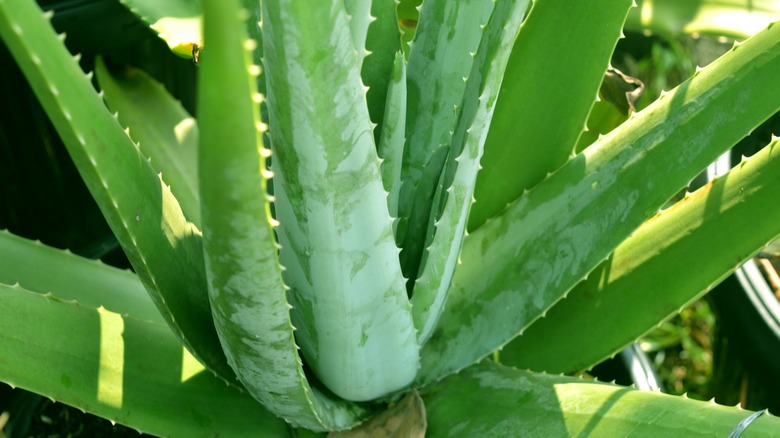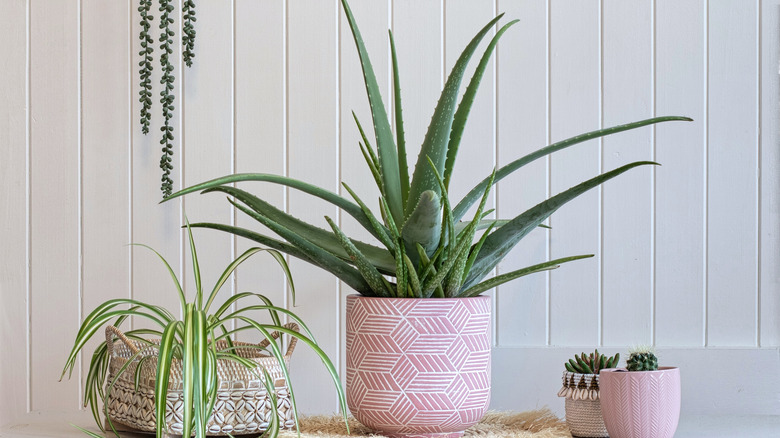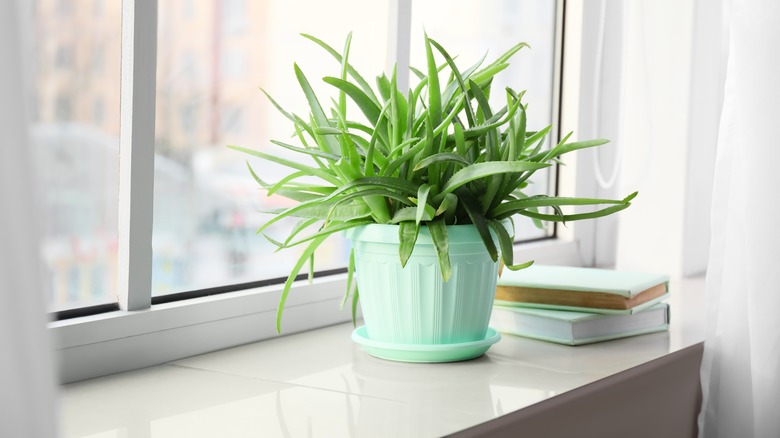Here's Why Your Aloe Plant Is Drooping
Aloe plants have infiltrated our homes with their versatile design and blue-green leaves that add much-needed spruce to the room. You can pretty much find one on any retail floor these days, some smaller that work well on a floating shelf and others quite large that are a statement piece on their own. Not only do aloe plants complement our spaces, but they also have tons of health benefits ranging from topical to oral. The Growers Exchange explains how the leaves' gelatinous insides are anti-inflammatory, carrying essential vitamins, minerals, and salicylic acids that work wonders on cuts and burns. You may recall your mom slapping aloe rub all over your sun-burned back when you were little — now you can come full circle and grow this plant inside your own house.
Aloe plants grow very thick and luscious leaves when given the proper care. Keep in mind that they are native to tropical regions of Africa and the Mediterranean, thriving in arid soils and dry environments. If you have noticed your aloe plant drooping and displaying signs of unhappiness, you will need to identify the conditions causing the distress.
Causes of an unhealthy aloe plant
When the aloe plant begins to decline in health, it is most commonly because of overwatering. Due to its unique appearance, it is easily forgotten that aloe plants are succulents and do best with watering schedules similar to those of cactuses and other desert plants. The Almanac advises that you water aloe plants thoroughly but infrequently, allowing the top third of the soil to dry out in between waterings. In the summer, this will typically have the plant on a two to three-week water rotation, becoming even less in the colder months. These succulents like soil with quality drainage, so it is vital to provide an airy soil mix and a pot with a drainage hole.
If you are confident that overwatering is not the culprit of your aloe's despair, examine other impacts of its surroundings, such as temperature, lighting, and any possible pests or diseases. Aloe vera needs bright light, but not in the sun's direct rays, to avoid burning its foliage. The best temperature to keep the plant in is 55 to 80 degrees Fahrenheit. Candide identifies common aloe plant pests, including aphids, white scale, red scale, spider mites, white flies, and snout weevils. Diseases could include root rot, stem rot, and aloe rust.
Reviving your aloe vera
After determining the cause of your aloe's drooping, you can now work to make it more comfortable and happy. If you find that overwatering was the issue, you'll want to first check the plant's roots to make sure they are healthy and not rotten. Should there be root rot, simply remove any rotted portion of the roots and repot the plant in completely new soil; otherwise, allow the soil to completely dry out before the next watering.
If the issue is that of temperature or light, move the plant to a new spot that gets adequate light for at least four hours a day, as suggested by Garden Report, and to an area that won't receive cold drafts from windows or doors. Any pests or diseases should be directly researched and treated specifically; however, a general rule of thumb is to completely repot the plant, remove any diseased portions, and spray its leaves with an insecticidal soap/water solution. If you follow these steps and keep the aloe vera in its preferred living conditions, those droopy leaves should perk up in no time.


